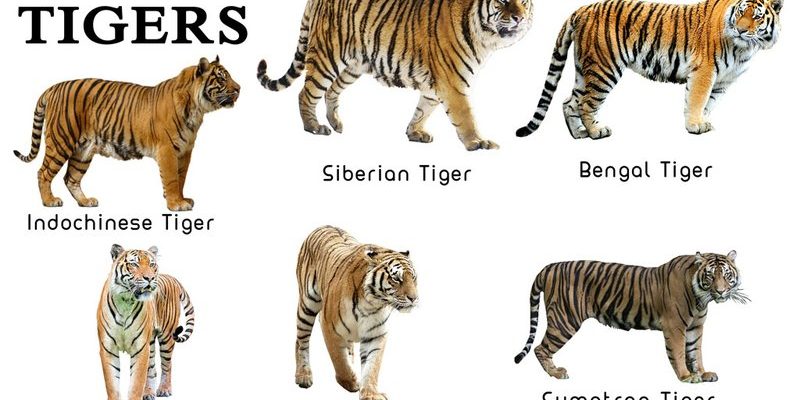![Comparing The Indochinese Tiger Vs. [Similar Species]](https://gudri.com/wp-content/uploads/2025/06/Comparing_The_Indochinese_Tiger_Vs___Similar_Species__image_0.jpg)
The Indochinese tiger, found primarily in Southeast Asia, is often less recognized than its more familiar counterpart, the Bengal tiger. Yet, it boasts some impressive adaptations that allow it to thrive in its specific habitats. The Bengal tiger, on the other hand, is a bit more famous, predominantly residing in India and parts of Bangladesh, Nepal, and Bhutan. Each species has its quirks, behaviors, and even conservation challenges. So, grab your cup of coffee, and let’s jump into their world.
Physical Characteristics: The Stripes and Size
When you see a tiger, the first thing that stands out are those striking stripes. But did you know the patterns and sizes differ between the Indochinese and Bengal tigers? The Indochinese tiger is generally smaller and has a more slender build compared to the robust Bengal.
Indochinese Tiger:
– Typically weighs between 220-400 pounds.
– Has a darker coat with narrow, closely spaced stripes.
– Features a more elongated body, perfect for squeezing through dense jungles.
Bengal Tiger:
– Can weigh between 400-570 pounds, making it the largest tiger subspecies.
– Boasts a bright orange coat with bold, widely spaced stripes.
– Its muscular frame helps it tackle larger prey.
The difference in their body structure isn’t just for show. It reflects their respective habitats. The Bengal tiger, with its size, can hunt larger animals such as gaur, while the more agile Indochinese tiger maneuvers through thick forests, preying on smaller wildlife.
Habitat Preferences: Where They Roam
Now let’s chat about where these tigers call home. Habitat can significantly affect their behavior and diet.
Indochinese Tiger Habitat:
– Primarily found in Southeast Asia, particularly in Thailand, Vietnam, and Laos.
– Prefers dense forested areas and mountainous regions, where it can utilize its agility.
Bengal Tiger Habitat:
– Predominantly found in India, but also roams in Bangladeshi and Nepalese territories.
– Adapts to various environments, from mangrove swamps to dry forests, showing a significant range of habitat preferences.
Both of these tigers have adapted to their environments. The Bengal tiger thrives in a more diverse habitat, while the Indochinese tiger’s preference for dense jungles allows it to blend in and stalk its prey effectively.
Diet and Hunting: Masters of the Hunt
Ever wonder what these powerful hunters like to munch on? Both the Indochinese and Bengal tigers are carnivorous but have different main dietary staples based on their environments.
Indochinese Tiger Diet:
– Often preys on smaller animals like deer and wild boar.
– Uses stealth and surprise to ambush its prey in thick foliage.
Bengal Tiger Diet:
– Feasts on larger mammals, such as buffalo, deer, and even smaller elephants at times.
– Relies on strength and force in open areas to catch prey.
The hunting strategies of these tigers showcase their adaptations. The Indochinese tiger’s slender build allows it to hide and spring, while the Bengal tiger uses its size and power to overpower larger prey.
Behavioral Traits: Solitary Predators
You might assume all big cats have similar behaviors, but that’s not quite the case. Tigers are generally solitary, but interesting behavioral differences exist.
Indochinese Tiger Behavior:
– More elusive and secretive, often avoiding human contact.
– Known for its low growls and chuffs, which are softer compared to the Bengal’s roar.
Bengal Tiger Behavior:
– While solitary, the Bengal tiger can be more tolerant of each other during mating season.
– Their roars can be heard for miles, signaling territory and attracting mates.
These behaviors help each species thrive in their respective environments. The Indochinese tiger’s elusive nature helps it survive in heavily forested areas, while the Bengal tiger’s vocal prowess allows for communication over vast distances.
Conservation Status: Facing Threats
Both of these majestic creatures face threats that jeopardize their survival. Understanding these challenges is crucial.
Indochinese Tiger Conservation:
– Currently listed as Endangered on the IUCN Red List.
– Threats include habitat loss due to logging, poaching, and human-wildlife conflict.
Bengal Tiger Conservation:
– Also classified as Endangered, but has a larger population compared to the Indochinese.
– Faces similar threats, with habitat destruction and poaching being significant concerns.
Conservation efforts for both species include habitat protection and anti-poaching initiatives. For instance, wildlife reserves and national parks play a crucial role in safeguarding their populations.
In comparing the Indochinese tiger and the Bengal tiger, we see two distinct yet equally fascinating creatures that embody the wild spirit of their environments. Each tiger has adapted beautifully to its habitat, showcasing unique physical characteristics, behaviors, and diets. However, both face similar threats that challenge their existence.
Here’s the thing: conserving these majestic big cats requires awareness and action. It’s not just about appreciating their beauty from afar; it’s about ensuring they continue to roam our planet for generations to come. So, the next time you think of tigers, remember the differences and similarities between the Indochinese and Bengal varieties. They’re not just big cats; they’re part of a delicate ecosystem that needs our respect and protection.

